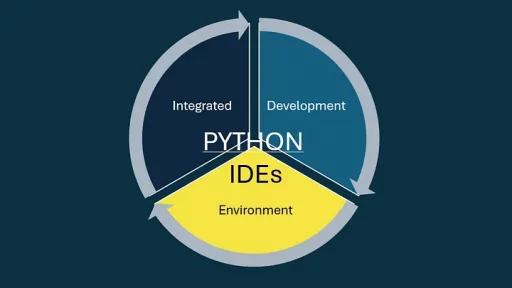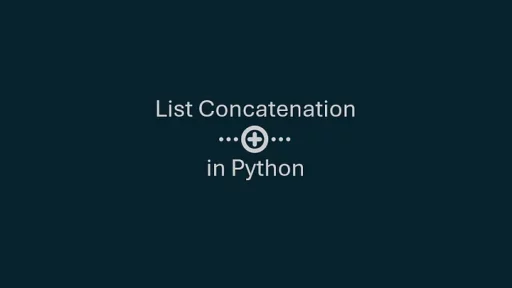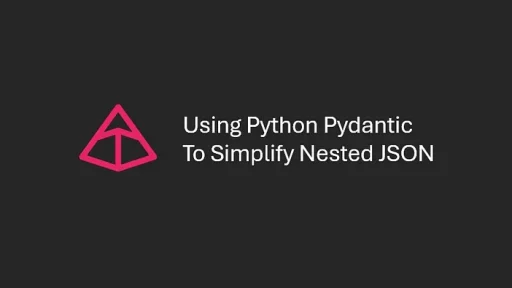With its ease of use, Python is the ultimate gateway to the tech world. Whether you’re exploring data science, web development, software engineering, game creation, or artificial intelligence, Python equips you with the tools to succeed.
To learn Python in 2025, it’s essential to align your learning journey with its diverse applications. Let’s explore how to get started with Python by focusing on the skills and tools needed for each domain.
1. Data Science
Data science is one of Python’s most prominent applications, transforming raw data into actionable insights. To begin learning Python with a focus on data science, start with the basics:
Steps to Start:
Learn the Fundamentals: Understand Python syntax, variables, data types, and control structures. These are foundational skills for data manipulation.
Explore Data Libraries:
- Pandas: For data cleaning and manipulation.
- NumPy: For numerical computations and handling arrays.
- Matplotlib & Seaborn: For creating data visualizations.
Get Hands-On: Use publicly available datasets (e.g., from Kaggle or government websites) to practice cleaning and analyzing data. Start with simple tasks like calculating averages or visualizing trends.
Study Statistics and SQL: A data scientist must understand basic statistics and how to retrieve data from databases using SQL.
Practice Real-World Projects: Analyze a movie database or visualize trends in public health data to reinforce your skills.
Real-World Examples:
- Spotify: Utilizes Python for data analysis to enhance features like the “Discover” section, providing personalized music recommendations to users. Inexture.
- Netflix: Employs Python for server-side data analysis, allowing engineers to choose Python for various analytical tasks. DataFlair.
- Uber: Relies on Python for mathematical calculations to provide accurate arrival time estimations and demand forecasting JayDevs.
By focusing on these tools and concepts, you’ll be prepared to move into advanced topics like machine learning and predictive analytics.
2. Web Development
Python powers some of the largest web platforms in the world. If your goal is to learn Python for web development, it’s essential to focus on creating functional, secure, and scalable applications.
Steps to Start:
Master Python Basics: Learn syntax, loops, and functions to create scripts that manage backend operations.
Understand Web Frameworks:
- Flask: Great for beginners and lightweight projects.
- Django: Ideal for building robust, scalable web applications.
Dive Into HTML, CSS, and JavaScript: While Python handles the backend, understanding frontend technologies is essential for web developers.
Learn Database Integration: Use Python libraries like SQLAlchemy to interact with databases. Django also comes with an integrated ORM for managing databases.
Build Simple Applications: Start with a to-do app, blog, or portfolio website. These projects teach you how to route pages, handle forms, and manage user data.
Deploy Your Work: Use platforms like Heroku or AWS to host your applications and gain hands-on experience with deployment.
Real-World Examples:
- Instagram: Built its backend using Django, benefiting from rapid development and scalability to support its vast user base. Regenesys.
- Pinterest: Utilizes Python, primarily Django, in its application layer to manage extensive content and user interactions. TutorialsPoint.
- Dropbox: Employs Python for both its server and desktop client software, ensuring seamless file storage and synchronization across platforms. TutorialsPoint.
By building projects and deploying them, you’ll gain a comprehensive understanding of how web applications function, setting you apart as a developer.
3. Software Development
If you’re intrigued by automating tasks, developing tools, or writing software, Python offers endless possibilities. Learning Python for software development means mastering problem-solving and practical programming techniques.
Steps to Start:
Strengthen Core Programming Skills: Focus on writing clean, efficient code. Learn about object-oriented programming (OOP) concepts like classes and inheritance.
Learn Automation Tools:
- Use Python for automating repetitive tasks with tools like Fabric.
- Explore scripting for system administration or DevOps workflows.
Explore Testing Frameworks: Tools like pytest allow you to write test cases that ensure your software functions as expected.
Version Control with Git: Familiarize yourself with Git and platforms like GitHub to manage your code and collaborate with others.
Build Utilities: Create scripts to automate tasks, like renaming files in bulk or monitoring system performance. These small projects prepare you for larger challenges.
Real-World Examples:
- Google: Incorporates Python in its internal tools and testing frameworks to automate tasks and enhance productivity. The Lead.
- Reddit: Operates its platform on Python, taking advantage of the language’s readability and scalability to manage extensive user-generated content. The Lead.
- NASA: Utilizes Python for scientific computing, data analysis, and automation of systems, contributing to mission-critical operations. JayDevs.
By mastering these tools and building utilities, you’ll become proficient in developing software solutions for personal or professional use.
4. Game Development
Game development is a creative and rewarding way to learn Python. While it’s not commonly used for high-end 3D games, Python shines in indie game development, prototyping, and scripting within larger engines.
Steps to Start:
Master Python Fundamentals: Focus on loops, functions, and OOP to structure your game logic effectively.
Learn Game Libraries:
- Pygame: Ideal for creating 2D games.
- Panda3D: For those looking to experiment with 3D game development.
Create Simple Games: Start with classics like Snake, Tetris, or Pong. These games teach you about player input, score tracking, and screen updates.
Understand Game Physics: Learn how to simulate movement, gravity, and collisions.
Collaborate with Artists and Designers: If you’re building a game with visuals or audio, working with other creatives can elevate your project.
Real-World Examples:
- EVE Online: This massively multiplayer online game uses Python to manage its complex server-side logic, ensuring a seamless gaming experience. STX Next.
- Civilization IV: Incorporates Python for in-game scripting, allowing developers to define gameplay mechanics and modify game behavior. Heicoders Academy.
- Disney’s Toontown Online: A family-friendly multiplayer game developed with Python, showcasing the language’s capability in game development. Heicoders Academy.
Game development combines programming with creativity, making it an exciting pathway to learning Python.
5. Machine Learning and Artificial Intelligence
Machine learning and AI are reshaping industries, and Python is at the forefront of this revolution. If you want to build intelligent systems, focus on Python’s ecosystem for AI.
Steps to Start:
Learn Python Basics: Start with syntax and libraries like NumPy and Pandas, which are foundational for handling datasets.
Explore ML Libraries:
- Scikit-learn: For classical machine learning algorithms.
- TensorFlow & PyTorch: For deep learning projects.
Master Data Preprocessing: Learn to clean and transform data for use in models.
Understand ML Concepts: Study regression, classification, clustering, and neural networks. Platforms like Coursera and edX offer excellent courses on these topics.
Work on AI Projects: Start with beginner-friendly projects like spam email detection, chatbot creation, or sentiment analysis.
Learn Deployment Tools: Use frameworks like Flask to deploy AI models as APIs for integration into applications.
Real-World Examples:
- Tesla: Utilizes Python for AI algorithms that power self-driving technology, contributing to advancements in autonomous vehicle development. Heicoders Academy.
- Facebook: Leverages Python through frameworks like PyTorch for advanced AI research and developing features such as facial recognition and content recommendations. JayDevs.
- Google: Employs Python-based frameworks like TensorFlow for various AI applications, including natural language processing and image recognition. JayDevs.
Python’s libraries and community support make it easier than ever to create innovative AI solutions, from self-driving algorithms to personalized recommendations.
Start Your Python Journey Today
Learning Python in 2025 isn’t just about mastering syntax — it’s about diving into what interest you. Begin with the fundamentals, explore the tools relevant to your field, and practice by building real-world projects. With persistence and curiosity, Python can become your gateway to opportunities in the tech world.
Thank you for reading this article. I hope you found it helpful and informative. If you have any questions, or if you would like to suggest new Python code examples or topics for future tutorials, please feel free to reach out. Your feedback and suggestions are always welcome!
Happy coding!
Py-Core.com Python Programming
You can also find this article at Medium.com


